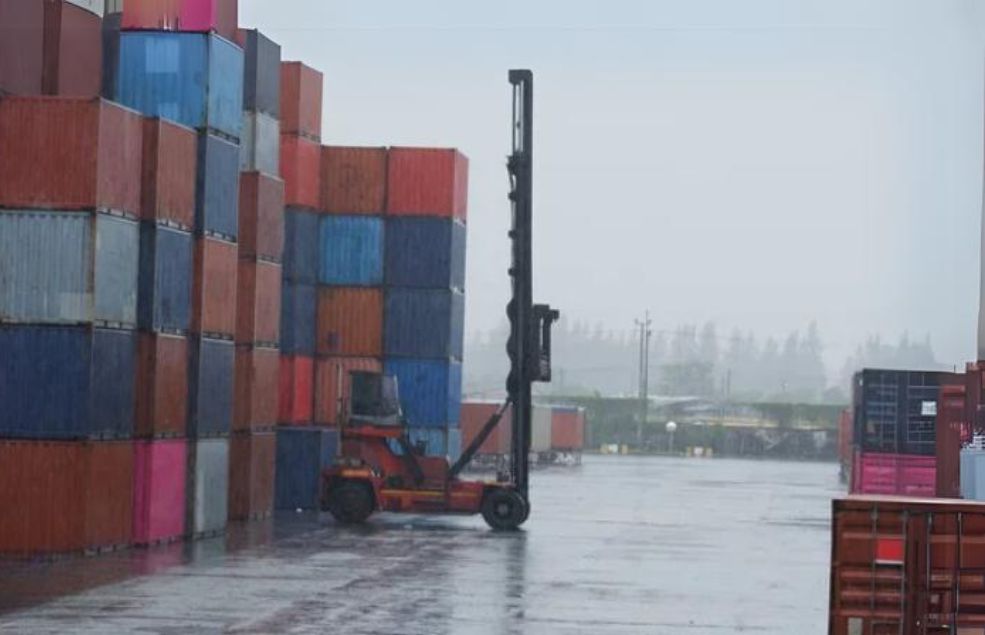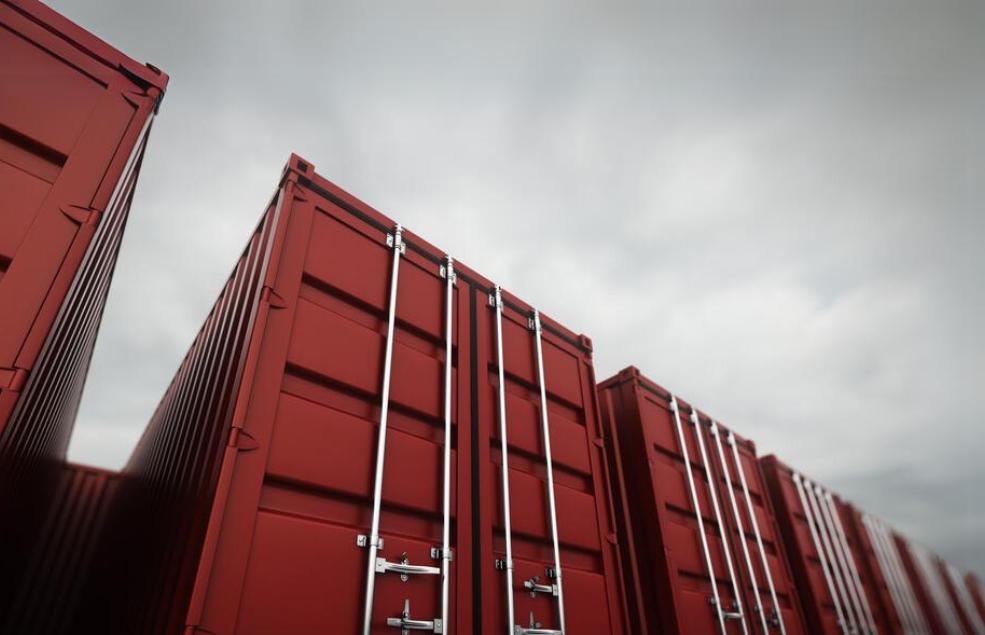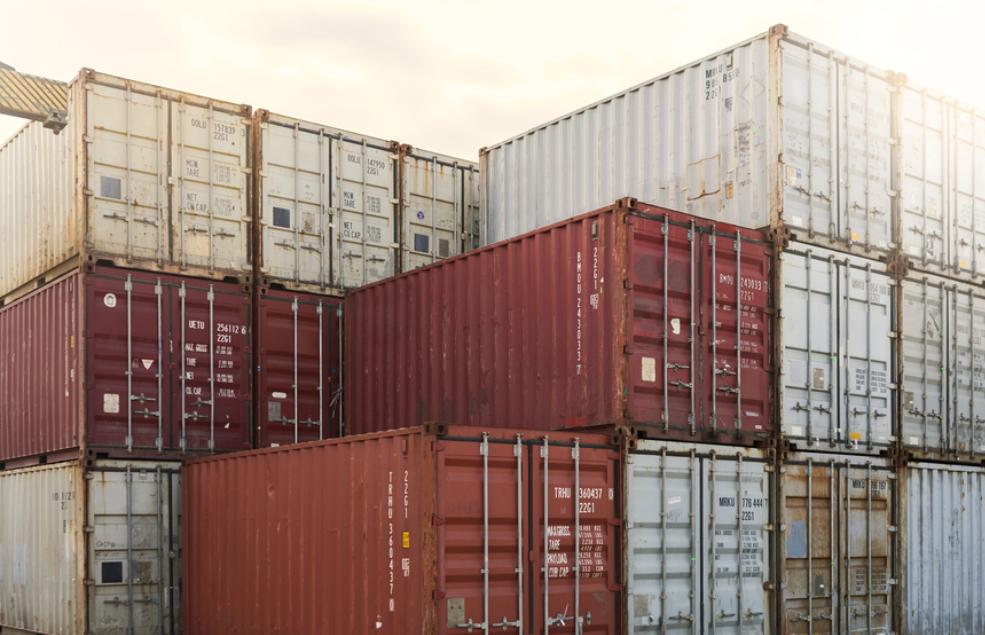
Before undertaking a project involving a shipping container, you need to be aware of one crucial factor: water protection. Whether it’s in the form of humidity, rainfall, or leaks, water can significantly damage unprotected materials. Therefore, it’s paramount to understand if shipping containers are waterproof and watertight.
Shipping containers are built to withstand tough ocean conditions, making water resistance not just an option, but a necessity. But what exactly does ‘waterproof’ and ‘watertight’ mean in the context of shipping containers? And are all containers equal in this respect?
In this guide, we aims to clarify complex terms, highlighting the water resistance qualities of shipping containers, the importance of seals and gaskets, and steps to waterproof a container. With this knowledge, you’ll be well-equipped for your forthcoming project, whether a storage site, field office, or a chic container home.
Table of Contents
Are Shipping Containers Waterproof?
In your quest to understand the water resistance of shipping containers, you’re probably asking yourself, “Are shipping containers actually waterproof?” In the shipping industry, the standard answer is “yes”, though with some specific caveats.
When the shipping containers are relatively new or in good condition, they naturally possess water-resistant qualities, owing to their robust construction and material selection. Remember, these containers are designed for ocean transport, where they are continuously exposed to harsh weather conditions, including heavy rainfall or sea spray. They need to protect the goods they carry from such elements, making them inherently capable of keeping out water to a significant extent.
However, don’t make the mistake of thinking the term ‘waterproof’ to mean ‘invincible against water under all circumstances.’ Even the best of containers can succumb to water ingress if they are older, have been poorly maintained, or are subjected to extremely harsh conditions for prolonged periods. This is particularly true for container roofs, which often bear the brunt of weathering, and over time, may develop tiny holes or leaks that unfortunately can allow in water.
It’s also important to note that although containers are durable and made to resist water to a considerable extent, they’re not designed to be entirely submerged in water. If a container is wholly immersed, the water pressure may become too great for the container’s seals to withstand, leading to possible leaks.
“Yes, containers are remarkably water-resistant under normal circumstances, but like all materials, they have their limits. Constant exposure to water and a lack of necessary maintenance can cause even the toughest container to leak” – Industry Expert
Furthermore, while waterproofing is a fantastic quality, it doesn’t make a container watertight. The term waterproof indicates that a material or object can resist the penetration of water to some degree, but not wholly or under all conditions. Whereas, to be watertight an item must keep out water under all conditions, even when fully submerged under a substantial body of water.
The Difference Between Waterproof and Watertight
As you ponder over the use of shipping containers, essential to consider is the level of protection they offer from water. This protection largely falls under two categories in the shipping industry: waterproof and watertight. Although these terms often get used interchangeably, they represent different degrees of water resistance. Knowing the differences between these terms can help you distinctions between decide waterproof if a shipping container meets your water protection needs..
Waterproof shipping containers pledge a higher degree of protection. In essence, being waterproof means a shipping container can prevent the entrance of water, even when fully submerged or exposed to prolonged periods of rain. Elaborately, it keeps the interior dry under various wet conditions, repelling water from every angle.
To be classified as watertight, on the other hand, suggests more limited water resistance. A watertight shipping container will prevent water penetration, but only up to a certain degree of water immersion or exposure. While it can contend with rain, snow, and brief submersion, its trustability in maintaining a dry interior wanes under sustained heavy water conditions.
How to determine if a shipping container is waterproof?
Some might wonder, “Is my shipping container waterproof?” But are they really asking the right question? Arguably, it’s more crucial to ask if a shipping container is water-resistant. Here’s why.
Notably, most containers in near-mint condition, often referred to as “one-trippers”, are virtually watertight. If they were not, ocean-going containers would gradually fill up with seawater during their maiden voyage. What’s more, the goods inside would be soaked before they reach their destination.
In addition, it’s necessary to understand that it’s not always a simple yes or no to whether a container is water-resistant. Several factors may influence this, including the age and condition of the container, the quality of its seals and gaskets, and the environmental conditions in which it is kept. Just remember, if properly maintained, your shipping container can remain effectively water-resistant for many years.
Here are a few simple but effective methods you can use to determine if your shipping container is water-resistant:
- Visual Inspection: Start with visually inspecting the container for any rust spots or holes – any visible damage could mean that the container is letting in water.
- Hose Test: Another quick method involves using a garden hose to spray water on the container’s roof and walls. This helps identify any leaks.
- Checking the Interior: Inspect the container’s interior for any signs of water-damage like rust, mold, damp patches, or a musty smell. If you find any, be sure to mend it right away.
- Seal Inspection: Check if the door seals are intact. Small gaps or wear could lead to water leakage.
- Professional Inspection: Lastly, when in doubt, seek help from a professional. Many companies offer inspection services that can provide you with a detailed report on your container’s condition.
If, after performing these checks, you have concerns that your container is no longer water-resistant, don’t worry. Some simple maintenance and repairs could restore its protective qualities. Keep reading to discover how to waterproof a shipping container.
Factors Affecting Water Resistance

Several factors can impact the water resistance of a shipping container. By understanding these elements, you can ensure you’re making the most informed decision when choosing a container for your specific needs.
Firstly, the age of a shipping container matters a lot. Over the years, exposure to weather, cargo, and transportation can deteriorate the container’s physical condition, compromising its ability to withstand water. Older containers often exhibit signs of wear and tear, such as rust or gasket damage, which can affect the water resistance.
The type of cargo previously transported in the container can also have an impact. Containers that transported dry goods may be in better condition than those which carried wet, corrosive, or heavy cargo that could have damaged the protective coating or put a strain on the container structure.
Maintenance and repairs are another critical factor. Even a well-made and durable shipping container can lose its ideal water resistance over time without proper maintenance. Regular checking and timely replacements of broken seals, rusty patches, or compromised building elements are crucial to maintaining the water resistance.
Custom modifications, such as windows, doors, or vents, can introduce weak points into the container. These modifications, if not done correctly, can significantly affect a container’s water resistance. Therefore, it’s essential that any modifications are undertaken by an experienced professional to prevent any potential water ingress.
As we can see, not all shipping containers are created equally when it comes to their ability to resist water. Choosing a container based on your individual needs, and taking the above factors into account, can help ensure that the container you choose provides the water protection you require.
How to waterproof a shipping container
If you’re considering using a shipping container for storage or construction, it’s vital to know how to make it waterproof. Don’t worry, turning a shipping container into a watertight, waterproof unit is less complicated than it appears.
Here’s a step-by-step guide on how to achieve this:
- Inspect for defects: Begin by thoroughly inspecting the shipping container. Check the roof and walls for any signs of rust or corrosion. Pay attention to the condition of the door seals and look for any visible holes or gaps that could allow water in.
- Repair any damage: If there’s any structural damage, you should address it promptly. This can involve patching holes or replacing severely damaged sections. This step is crucial, as it determines the overall integrity of the container.
- Check the door seals: The door seals are a common weak point in terms of waterproofing. Ensure that they are in good condition and replace them if necessary.
- Apply anti-corrosion paint: Once all repairs are completed, apply an anti-corrosion primer and paint to the container’s exterior. This will provide an additional layer of protection against water intrusion while also helping to prevent rust. You should also consider painting the interior to further enhance the water resistance.
- Add a waterproof coating: Finally, you can add an additional layer of waterproof coating to the container’s roof. This will help to prevent water from seeping in, especially during heavy rainstorms or snow melt.
Follow these steps, and you should have a waterproof and highly durable shipping container, capable of withstanding even the harshest conditions. However, remember that maintenance is key. Regular inspections and prompt repairs will ensure that your container remains waterproof and serviceable for many years to come.
Exploring the Benefits of Waterproof Containers
After going through these detailed benefits of waterproof containers, it’s clear how significant water resistance is for a shipping container interface. To get a snapshot view of these benefits, let’s look at them in a tabulated format. The simple structure of a table will give you a quick comparative overview and enable you to understand the importance of each feature at a glance. Here it is:
| Benefit | Explanation |
|---|---|
| Optimal Protection for Goods | Avoids damage to the contents in the container, making sure they reach their destination unaffected by water. |
| Longer Lifespan | Resists corrosion and rust, extending the usable life of the container, and saving you from frequent replacements. |
| Wide Range of Applications | Can be used for diversified applications beyond storage, including housing and offices, while ensuring protection from water damage. |
| Adaptability to Different Weathers | Provides protection from various forms of moisture including rain, snow, dew, and high humidity, making them suitable for diverse climate zones. |
Other Factors to Consider When Using Shipping Containers
Grasping the water resistance of shipping containers is crucial. However, it’s also necessary to keep in mind that various additional elements influence the performance and safety of these adaptable units. Beyond their water-repelling capability, pay attention to these key aspects:
- Durability and Structural Integrity: Built to withstand challenging weather and long distances on sea, shipping containers are inherently durable. However, used containers may have endured wear and tear, potentially compromising their structural integrity. Always check for visible signs of damage such as dents, corrosion, or broken door seals.
- Insulation: Unless you’re planning on using the container in a controlled environment, insulation is a critical aspect to consider. High-grade insulation helps regulate temperature within the container, which is especially essential if you’re storing temperature-sensitive goods, or plan on converting your container into a livable space.
- Ventilation: Good ventilation helps prevent condensation build-up and maintains air circulation, preventing any potential damage to the goods stored.
- Security: Many shipping containers come with built-in locking mechanisms. If your container doesn’t have one or you need additional security, there are several lock box options available.
- Modification and Customization: Shipping containers can be modified to include windows, doors, electrical installations, and more. If you’re planning on modifying your container, ensure it’s allowed within local zoning laws.
Remember, a well-maintained and thoughtfully modified shipping container can greatly extend its utility beyond simple storage—they’ve been innovatively used for tiny homes, swimming pools, pop-up shops and more.
Seals and Gaskets in Container Water Protection

Seals and gaskets play a vital role in maintaining the integrity of a shipping container against water intrusion. These components create a secure barrier at the door’s edges, preventing water from entering the container. High-quality rubber gaskets, in particular, ensure a watertight seal. Over time, exposure to the elements can cause these seals to degrade, affecting their effectiveness. Regular inspection and replacement of compromised seals is crucial in preserving the container’s water resistance. Additionally, using lubricants can help maintain the flexibility and durability of these seals, therefore enhancing their resistance to water.
The Bottom Line
To sum up, shipping containers can provide robust, cost-effective, and flexible solutions for a diverse range of needs. They are inherently durable and built to withstand extreme conditions. While they offer substantial resistance to water, depending on your specific needs and circumstances, you might need to consider additional measures to ensure optimal water protection.
Industry experts and real-world experiences affirm that new shipping containers typically offer a high degree of water resistance. Nevertheless, a container’s ability to resist water can be impacted by several factors including its age, maintenance, and the condition of its seals and gaskets.